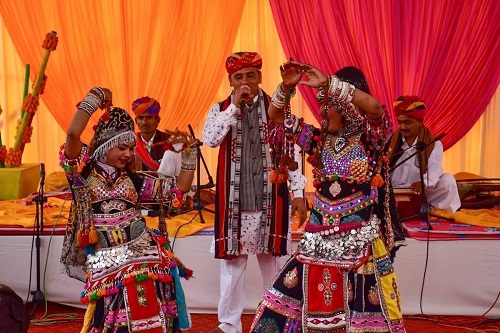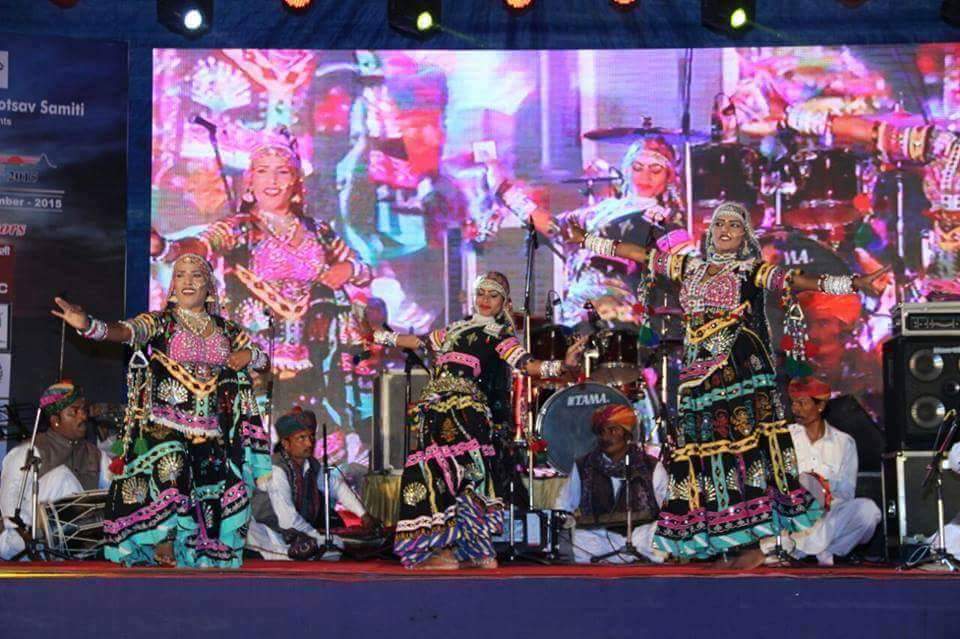.jpg)

 |
The
Kalbeliya Rajasthani folk dance performed to
celebrate any joyful moment in the community is an
integral part of Kalbeliya culture. Their dances and
songs are a matter of pride and a marker of identity
for the Kalbeliyas and they represent the creative
adaptation of this community of snake charmers to
changing financial conditions and their own
particular job in the provincial Rajasthani society.
The kalbeliya Rajasthani folk Dance Group is a group
of dancers, all are women in flowing black skirts
who dance and twirl, recreating the movements of a
serpent. The upper body cloth is called Angrakha and
a piece of cloth worn on the head known as Odhani
similarly the lower body cloth is called Lehenga.
Every one of these materials is blended with red and
dark shades and embroidered so that when these
artists perform these clothes represent a
combination of colors soothing to the eyes and in
addition to the environment.
The male members of kalbeliya Rajasthani folk Dance
Group deal with the musical piece of the dance. They
utilize the distinctive instruments, for example,
the pungi, a woodwind instrument generally played to
catch winds, the dufli, been, the khanjari - a
percussion instrument, morchang, khuralio and the
dholak to make the cadence on which the artists
perform. The artists are inked in customary outlines
and wear gems and pieces of clothing lavishly weaved
with little mirrors and silver string. As the
execution advances, the rhythm turns out to be
quicker and quicker thus does the dance.
Kalbeliya songs are based on stories taken from
folklore and mythology and special dances are
performed during Holi. The Kalbeliya have a
reputation for composing lyrics spontaneously and
improvising songs during performances. These
melodies and dances are a piece of an oral custom
that is passed on ages and for which there are
neither writings nor reference booklets. In 2010,
the Kalbeliya folk songs and dances of Rajasthan
were declared a part of its Intangible Heritage List
by the UNESCO.
|
.jpg)


